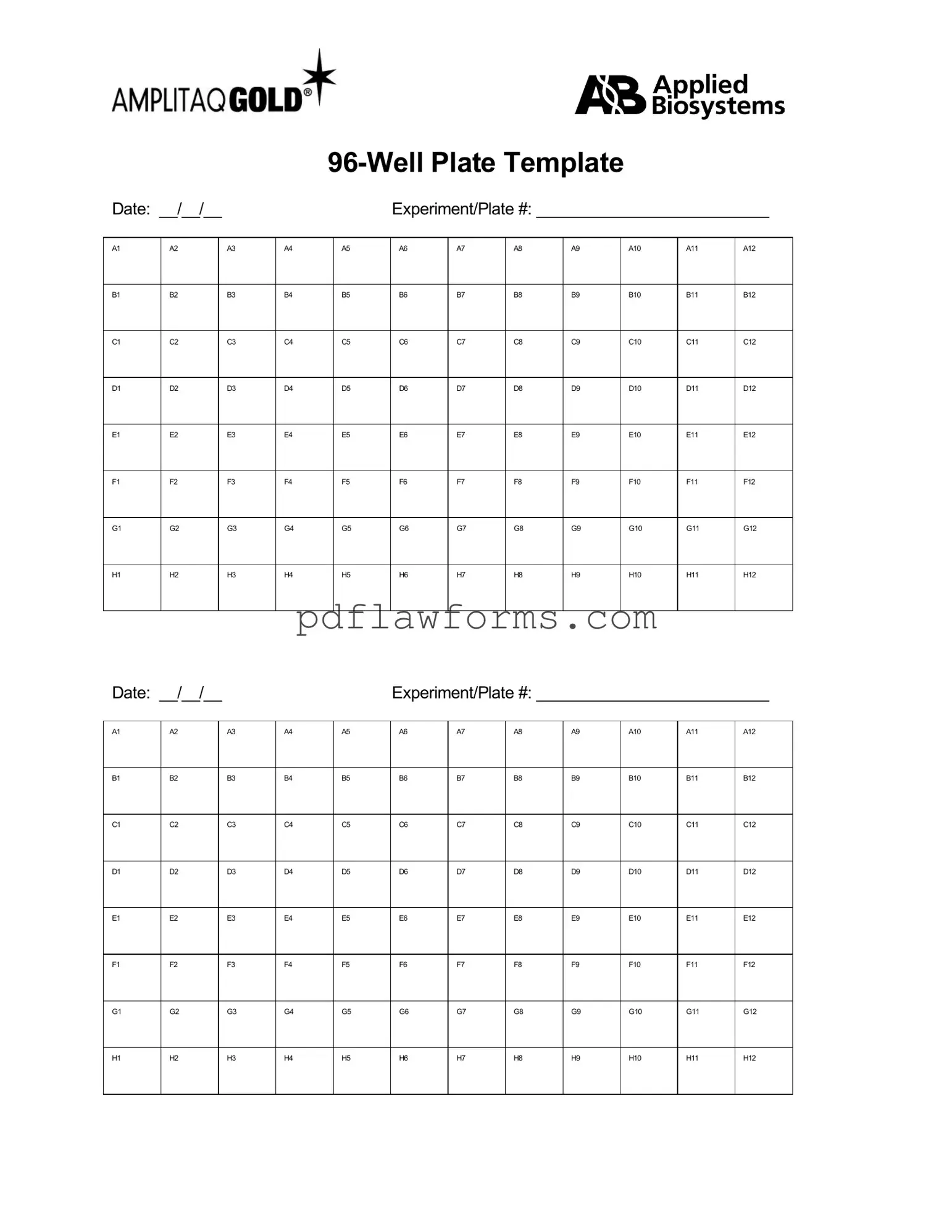Fill Your 96 Well Template
The 96 Well form is a standardized document used primarily in laboratory settings to organize and record data from experiments involving 96-well plates. This form facilitates efficient data collection and analysis, ensuring that researchers can accurately track their findings. For those interested in utilizing this form, please fill it out by clicking the button below.
Make My Document Online
